- CALL US (404) 814-1814
- LIVE SUPPORT
- EMAIL US
-
WISHLIST (0)
-
CART(0)
men's blue Rolex Air-King Watch Collection
463 MATCHES FOUND
IN STOCK
SwissWatchExpo ARCHIVE - RECENTLY SOLD
Sold

Rolex Air King 34mm Blue Dial Smooth Bezel Steel Mens Watch 14000
Stock Number: 66475
Join Waitlist
Sold

Rolex Air King 34mm Blue Dial Smooth Bezel Steel Mens Watch 14000
Stock Number: 66856
Join Waitlist
Sold

Rolex Air King Engine Turned Bezel Blue Dial Steel Mens Watch 14010 Box Papers
Stock Number: 69321
Join Waitlist
Sold

Rolex Air King 34mm Blue Dial Smooth Bezel Steel Mens Watch 14000
Stock Number: 69254
Join Waitlist
Sold
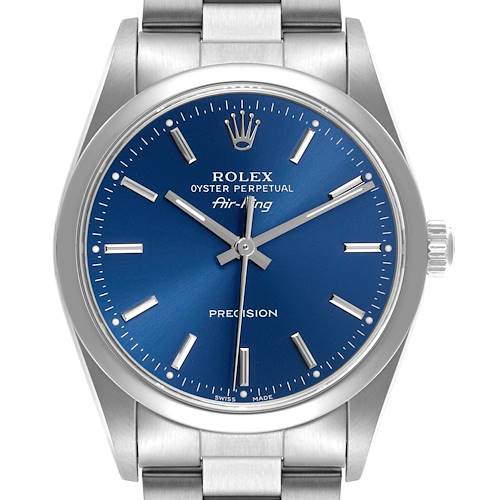
Rolex Air King 34mm Blue Dial Smooth Bezel Steel Mens Watch 14000
Stock Number: 67378
Join Waitlist
Sold

Rolex Air King 34mm Blue Dial Smooth Bezel Steel Mens Watch 14000
Stock Number: 68557
Join Waitlist
Sold

Rolex Air King Engine Turned Bezel Blue Dial Steel Mens Watch 14010 Box Papers
Stock Number: 68352
Join Waitlist
Sold

Rolex Air King 34mm Blue Dial Smooth Bezel Steel Mens Watch 14000 Box Papers
Stock Number: 66810
Join Waitlist
Sold

Rolex Air King 34mm Blue Dial Smooth Bezel Steel Mens Watch 14000
Stock Number: 67679
Join Waitlist
Sold
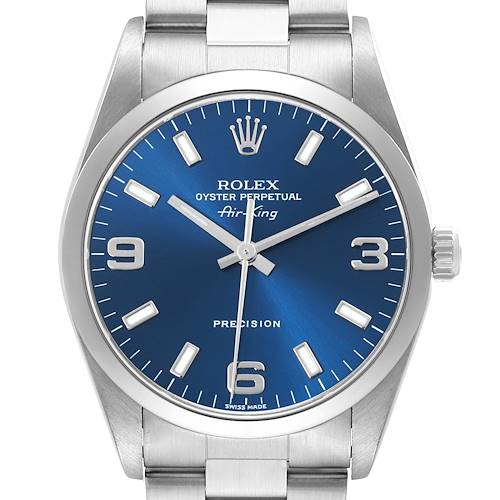
Rolex Air King 34mm Blue Dial Smooth Bezel Steel Mens Watch 14000
Stock Number: 67519
Join Waitlist
Sold

Rolex Air King 34mm Blue Dial Smooth Bezel Steel Mens Watch 14000
Stock Number: 67680
Join Waitlist
Sold

Rolex Air King 34mm Blue Dial Smooth Bezel Steel Mens Watch 14000
Stock Number: 67310
Join Waitlist
Sold

Rolex Air King 34mm Blue Dial Smooth Bezel Steel Mens Watch 14000
Stock Number: 67424
Join Waitlist
Sold

Rolex Air King 34mm Blue Dial Smooth Bezel Steel Mens Watch 14000
Stock Number: 67307
Join Waitlist
Sold
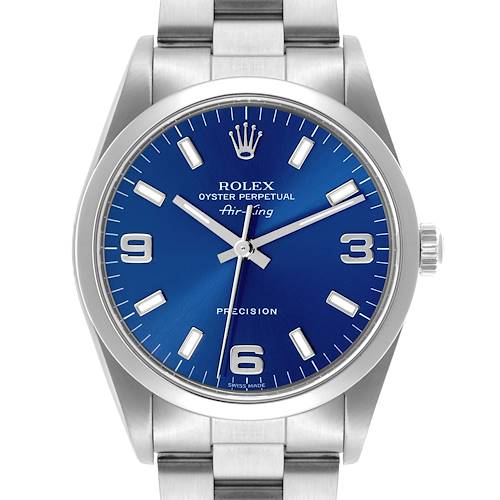
Rolex Air King 34mm Blue Dial Smooth Bezel Steel Mens Watch 14000
Stock Number: 67376
Join Waitlist
Sold

Rolex Air King 34mm Blue Dial Smooth Bezel Steel Mens Watch 14000
Stock Number: 66965
Join Waitlist
Sold

Rolex Air King Engine Turned Bezel Blue Dial Steel Mens Watch 14010
Stock Number: 66108
Join Waitlist
Sold
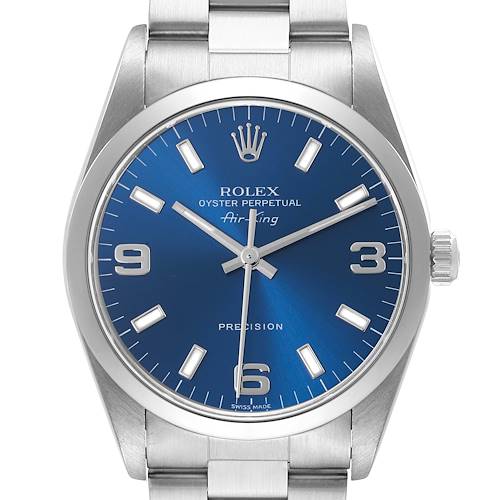
Rolex Air King 34mm Blue Dial Smooth Bezel Steel Mens Watch 14000 Box Papers
Stock Number: 66918
Join Waitlist
Sold

Rolex Air King Engine Turned Bezel Blue Dial Steel Mens Watch 14010
Stock Number: 67379
Join Waitlist
Sold

Rolex Air King 34mm Blue Dial Smooth Bezel Steel Mens Watch 14000
Stock Number: 66977
Join Waitlist
Sold

Rolex Air King 34mm Blue Dial Smooth Bezel Steel Mens Watch 14000
Stock Number: 66405
Join Waitlist
Sold

Rolex Air King 34mm Blue Dial Smooth Bezel Steel Mens Watch 14000
Stock Number: 66369
Join Waitlist
Sold
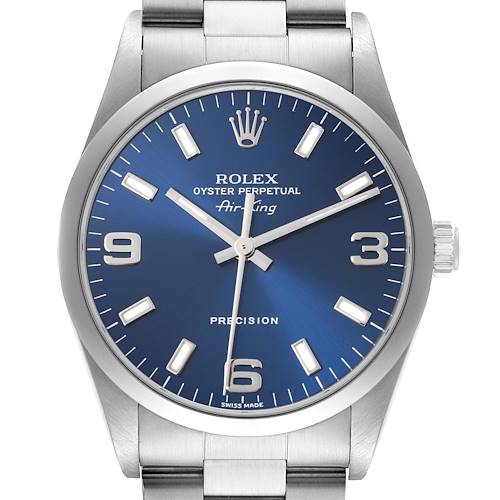
Rolex Air King 34mm Blue Dial Smooth Bezel Steel Mens Watch 14000
Stock Number: 60962
Join Waitlist
Sold

Rolex Air King 34mm Blue Dial Smooth Bezel Steel Mens Watch 14000
Stock Number: 66514
Join Waitlist
Sold
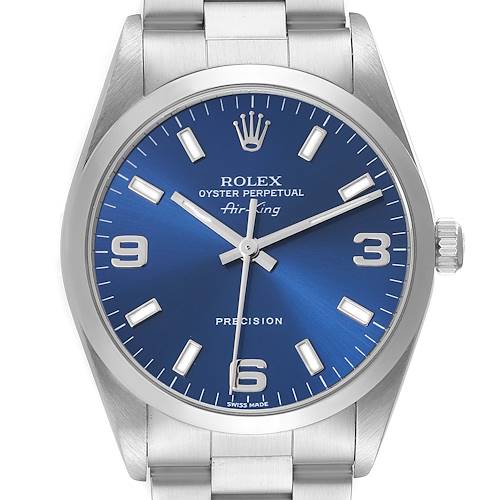
Rolex Air King 34mm Blue Dial Smooth Bezel Steel Mens Watch 14000
Stock Number: 66292
Join Waitlist
Sold

Rolex Air King Engine Turned Bezel Blue Dial Steel Mens Watch 14010
Stock Number: 66024
Join Waitlist
Sold

Rolex Air King Blue Dial Engine Turned Bezel Steel Mens Watch 14010
Stock Number: 65603
Join Waitlist
Sold
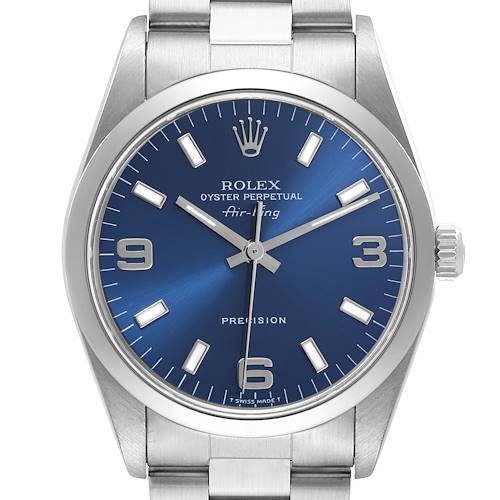
Rolex Air King 34mm Blue Dial Smooth Bezel Steel Mens Watch 14000 Box Papers
Stock Number: 65635
Join Waitlist
Sold

Rolex Air King 34mm Blue Dial Smooth Bezel Steel Mens Watch 14000
Stock Number: 65653
Join Waitlist
Sold

Rolex Air King 34mm Blue Dial Smooth Bezel Steel Mens Watch 14000
Stock Number: 65205
Join Waitlist
Sold

Rolex Air King 34mm Blue Dial Smooth Bezel Steel Mens Watch 14000
Stock Number: 64672
Join Waitlist
Sold

Rolex Air King 34mm Blue Dial Smooth Bezel Steel Mens Watch 14000
Stock Number: 64588
Join Waitlist
Sold

Rolex Air King 34mm Blue Dial Smooth Bezel Steel Mens Watch 14000
Stock Number: 64801
Join Waitlist
Sold

Rolex Air King Blue Dial Engine Turned Bezel Steel Mens Watch 14010
Stock Number: 64450
Join Waitlist
Sold

Rolex Air King 34mm Blue Dial Smooth Bezel Steel Mens Watch 14000
Stock Number: 64025
Join Waitlist
Sold
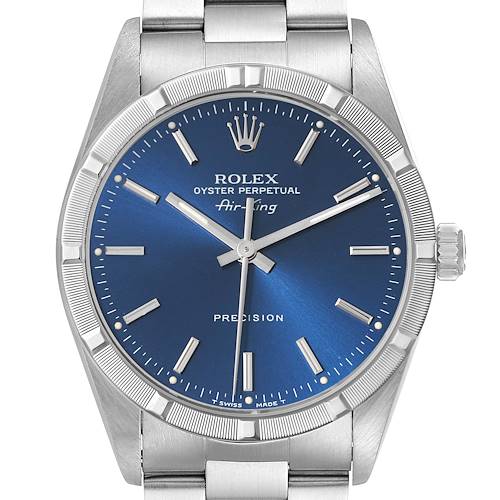
Rolex Air King Engine Turned Bezel Blue Dial Steel Mens Watch 14010
Stock Number: 63452
Join Waitlist
Sold

Rolex Air King Blue Dial Engine Turned Bezel Steel Mens Watch 14010
Stock Number: 63164
Join Waitlist
Sold

Rolex Air King Blue Dial Engine Turned Bezel Steel Mens Watch 14010
Stock Number: 62733
Join Waitlist
Sold

Rolex Air King 34mm Blue Dial Smooth Bezel Steel Mens Watch 14000
Stock Number: 62373
Join Waitlist
Sold
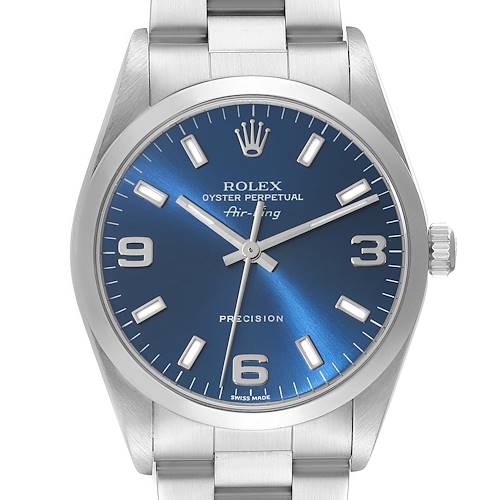
Rolex Air King 34mm Blue Dial Smooth Bezel Steel Mens Watch 14000
Stock Number: 60720
Join Waitlist
Sold

Rolex Air King Engine Turned Bezel Blue Dial Steel Mens Watch 14010
Stock Number: 62807
Join Waitlist
Sold
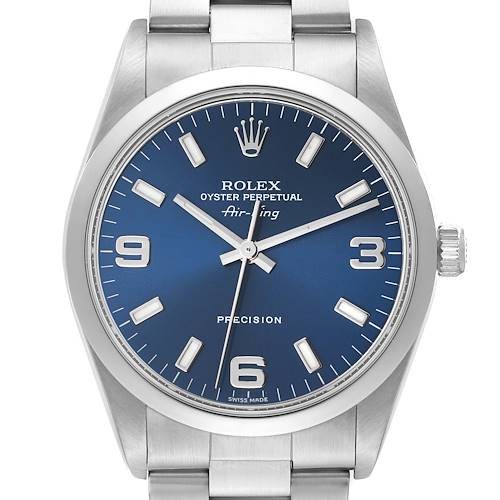
Rolex Air King 34mm Blue Dial Smooth Bezel Steel Mens Watch 14000
Stock Number: 62605
Join Waitlist
Sold
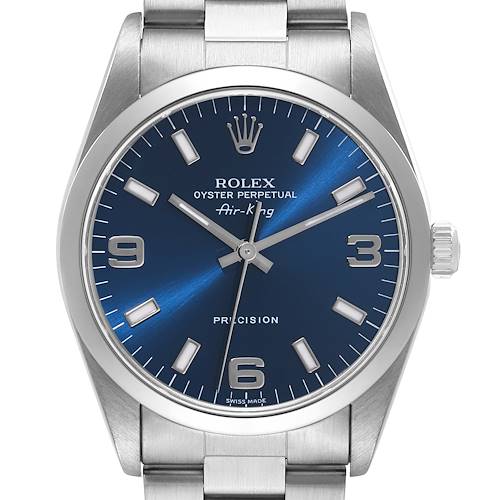
Rolex Air King 34mm Blue Dial Smooth Bezel Steel Mens Watch 14000
Stock Number: 54616
Join Waitlist
Sold

Rolex Air King 34mm Blue Dial Smooth Bezel Steel Mens Watch 14000
Stock Number: 61765
Join Waitlist
Sold

Rolex Air King Blue Dial Engine Turned Bezel Steel Mens Watch 14010
Stock Number: 61751
Join Waitlist
Sold

Rolex Air King Engine Turned Bezel Blue Dial Steel Mens Watch 14010 Unworn NOS
Stock Number: 61334
Join Waitlist
Sold

Rolex Air King Blue Dial Smooth Bezel Steel Mens Watch 14000 Box Papers
Stock Number: 61183
Join Waitlist
Sold

Rolex Air King Blue Concentric Dial Steel Mens Watch 114200 Box Card
Stock Number: 60968
Join Waitlist
Sold

Rolex Air King Engine Turned Bezel Blue Dial Steel Mens Watch 14010
Stock Number: 56336
Join Waitlist
Sold
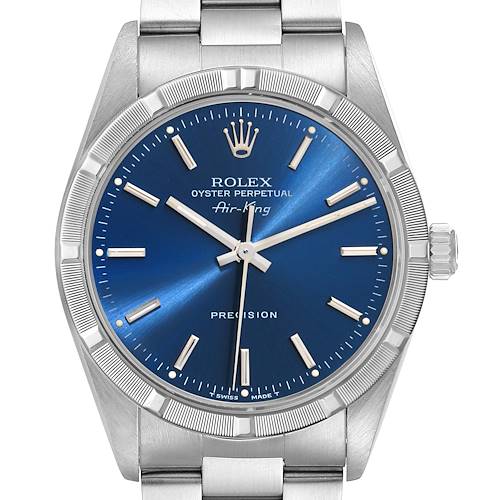
Rolex Air King Engine Turned Bezel Blue Dial Steel Mens Watch 14010 Box Papers
Stock Number: 60578
Join Waitlist
Sold

Rolex Air King 34mm Blue Dial Smooth Bezel Steel Mens Watch 14000
Stock Number: 60548
Join Waitlist
Sold

Rolex Air King Blue Dial Smooth Bezel Steel Mens Watch 14000 Papers
Stock Number: 60347
Join Waitlist









